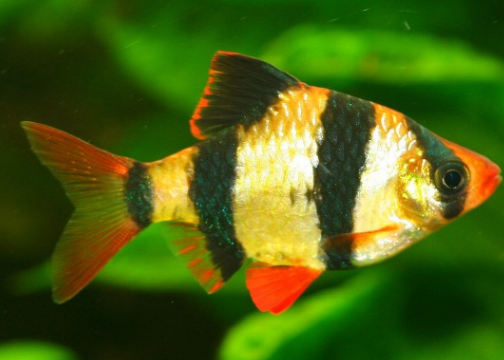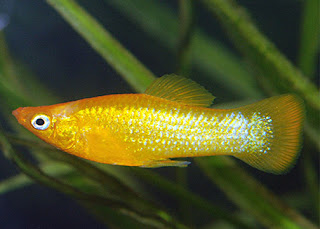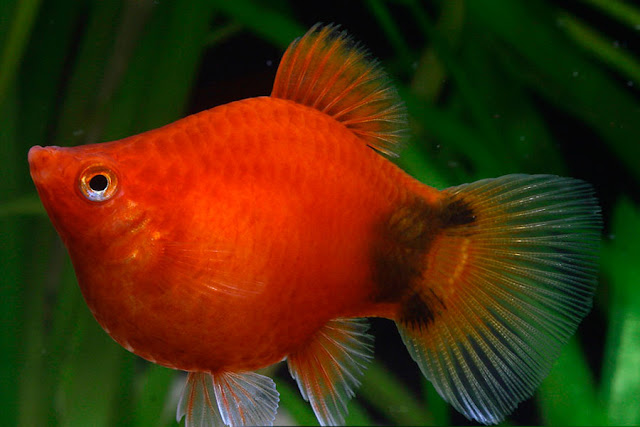Tiger Barb (Puntigrus tetrazona)

Tiger Barb ( Puntigrus tetrazona) Quick Stats Minimum Tank Size: 20 Gallons Care Level: Moderately Difficult Water Conditions: 6.0-8.0 and Moderately Soft to Moderately Hard Temperature: 22–27 °C (71.5–80.5 °F) Maximum Size: 1.5 inches (4cm) The Tiger Barb (Puntius tetrazona), also known as the Sumatra Barb, is a small minnow native to Sumatra, Borneo, Thailand and parts of Malaysia. It has also been reported in numerous other areas of Southeast Asia, but at this time it hasn’t been confirmed outside of its native range. In the wild, they are mainly found in the shallows of slow flowing streams, but can also be found in small bodies of water and swamp lakes. Because of their wide array of habitats, they are highly adaptable to different types of water in the home aquarium, and can adapt quite readily to harder water. The tiger barb stays relatively small in the home aquarium, with adults growing to a maximum of 3 inches (7.5 cm), with 2 inches (5cm) being more com





